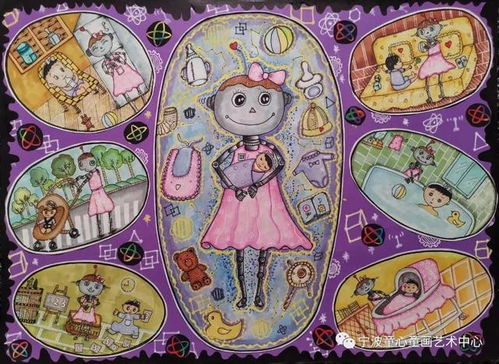幼儿科技绘画获奖作品一等奖

Exploring AwardWinning Technological Artworks
Technological advancements have not only revolutionized industries but also transformed the realm of art. The intersection of technology and art has led to the creation of mesmerizing pieces that push the boundaries of creativity and innovation. In this article, we'll delve into awardwinning technological artworks across various mediums and explore the profound impact they have on both the art world and technological innovation.
Digital painting combines traditional painting techniques with digital tools and software to create stunning artworks. One notable example of awardwinning digital painting is "The Machine" by artist Andreas Rocha. This captivating piece seamlessly blends natural landscapes with futuristic elements, showcasing the artist's mastery of digital techniques.
For aspiring digital artists, it's essential to experiment with different software and tools to find your unique style. Learning techniques such as digital blending, layering, and texture creation can greatly enhance your digital painting skills.
Interactive installations blur the line between the audience and the artwork, inviting viewers to actively participate in the artistic experience. "Rain Room" by Random International is a prime example of an awardwinning interactive installation. This immersive artwork allows visitors to walk through a simulated rainstorm without getting wet, thanks to motion sensors that control the rainfall around them.
Creating interactive installations requires a combination of artistic vision and technical expertise. Artists often collaborate with engineers and programmers to bring their ideas to life. Understanding concepts such as sensor technology, projection mapping, and interactive programming is crucial for executing successful interactive artworks.
Generative art utilizes algorithms and computational processes to generate dynamic visuals that evolve over time. "Emergence" by Casey Reas and Ben Fry is a notable example of awardwinning generative art. This mesmerizing piece continuously generates intricate patterns and shapes, reflecting the beauty of emergent complexity.
To create generative artworks, artists must have a solid understanding of programming languages such as Processing, Python, or JavaScript. Experimenting with algorithms and exploring concepts such as recursion, randomness, and iteration can unlock endless possibilities for creative expression.
Augmented reality art overlays digital content onto the physical world, transforming ordinary spaces into immersive artistic experiences. "HoloLens Art" by Microsoft is an exemplary project that explores the potential of AR technology in art creation. Using the HoloLens headset, viewers can interact with virtual sculptures and paintings superimposed onto their surroundings.
For artists interested in AR art, familiarizing themselves with AR development platforms such as Unity or ARKit is essential. Experimenting with markerbased and markerless AR experiences can open up new avenues for creative storytelling and artistic expression.
Bio art merges art with biology, exploring themes related to genetics, biotechnology, and the environment. "Tissue Culture & Art Project" by Oron Catts and Ionat Zurr is a groundbreaking example of awardwinning bio art. This project involves growing living sculptures using tissue engineering techniques, blurring the boundaries between the living and the artificial.
Creating bio art requires interdisciplinary knowledge in biology, genetics, and art. Artists must familiarize themselves with techniques such as tissue engineering, genetic modification, and bioinformatics to create thoughtprovoking artworks that challenge our perceptions of life and technology.
Awardwinning technological artworks span a diverse range of mediums and genres, showcasing the endless possibilities that arise from the fusion of art and technology. Whether it's digital painting, interactive installations, generative art, augmented reality, or bio art, each medium offers unique opportunities for artistic expression and innovation.
Aspiring artists interested in creating technological artworks should embrace experimentation, collaboration, and continuous learning. By mastering both artistic skills and technological tools, artists can push the boundaries of creativity and inspire new ways of thinking in both the art world and the realm of technology.
